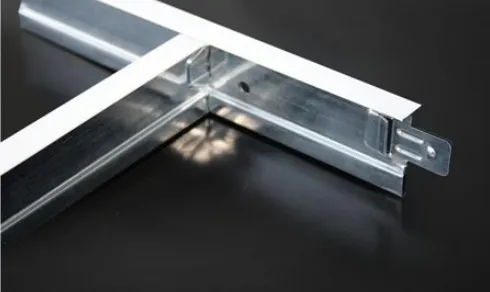Dec . 12, 2024 09:37 Back to list
how to install a ceiling access panel
How to Install a Ceiling Access Panel A Step-by-Step Guide
Installing a ceiling access panel is a practical solution for gaining easy access to plumbing, electrical wiring, or HVAC systems located above your ceiling. This DIY project can save you time and money when you need to reach these areas for maintenance or repairs. In this article, we’ll guide you through the process of installing a ceiling access panel from measurement to finishing touches.
Step 1 Gather Your Materials
Before beginning the installation, make sure you have all the necessary materials on hand. You will need
1. Ceiling access panel – choose a size that fits your needs. 2. Measuring tape. 3. Pencil or chalk. 4. Drywall saw or utility knife. 5. Level. 6. Stud finder. 7. Safety goggles. 8. Dust mask. 9. Screwdriver and screws (if necessary).
Step 2 Choose the Location
Decide where you want to install the access panel. Ideally, it should be placed in an area that allows easy access to the systems you need to reach. Use a stud finder to ensure that you are not placing the panel directly over a ceiling joist, as this could complicate the installation process. Mark the chosen spot with a pencil.
Step 3 Measure and Mark
Using your measuring tape, determine the dimensions of your access panel. Make sure to measure the opening you’ll need to cut in the ceiling accurately. Use your pencil to trace the outline of the panel as a guide for cutting. Double-check your measurements to ensure accuracy.
Step 4 Cut the Opening
how to install a ceiling access panel

Once you have marked the outline of the access panel, it’s time to cut the opening in the ceiling. Put on your safety goggles and dust mask to protect yourself from falling debris. Use a drywall saw or utility knife to carefully cut along the marked lines. Take your time to ensure a clean cut, and be cautious of any existing wiring or pipes in the area.
Step 5 Install the Frame
Most ceiling access panels come with a frame that needs to be installed first. Position the frame within the opening you just created. Use a level to ensure that the frame is straight and install it according to the manufacturer’s instructions. This may involve securing it with screws or adhesive to the surrounding ceiling material.
Step 6 Insert the Access Panel
Once the frame is securely in place, it’s time to insert the access panel. Depending on the design of your panel, this may involve simply sliding it into the frame or securing it with additional screws. Make sure the panel is flush with the ceiling for a seamless look.
Step 7 Finishing Touches
After the access panel is installed, check to ensure it opens and closes smoothly. If there is any visible gap between the panel and the ceiling, consider using caulk or trim to create a more polished appearance. Paint the panel to match the ceiling color if necessary, ensuring it blends seamlessly with the surrounding area.
Conclusion
Installing a ceiling access panel is a straightforward DIY task that can improve the functionality of your home. By following these steps, you can create a practical solution for gaining access to critical systems while maintaining the aesthetics of your ceiling. With the right tools and careful planning, you can complete the installation successfully and enjoy the benefits of easier maintenance for years to come. Whether you’re a seasoned DIYer or a beginner, this project is manageable and rewarding, providing peace of mind about your home’s upkeep.
-
Quality Ceiling Trap Doors & Access Panels | Easy & Secure AccessNewsAug.30,2025
-
Durable Ceiling T Grid Systems | Easy InstallationNewsAug.29,2025
-
PVC Gypsum Ceiling: Durable, Laminated Tiles for Modern SpacesNewsAug.28,2025
-
Pvc Gypsum Ceiling Is DurableNewsAug.21,2025
-
Mineral Fiber Board Is DurableNewsAug.21,2025
-
Ceiling Tile Clip Reusable DesignNewsAug.21,2025







